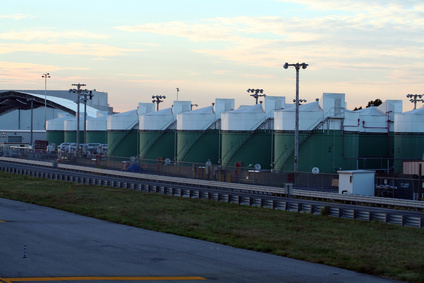
Jet fuel conductivity is important to standardize because it determines the degree at which jet fuel transmits an electric charge, and indirectly the degree at which it could potentially spark and ignite. But, just as gasoline is available in a number of grades, modern jet fuels are available in multiple formulations, including commercial Jet A-1 and two common military grades, JP-8 and JP-4.
Jet A-1 is a standard jet fuel used in commercial aviation. It is a kerosene-grade fuel suitable for use with most turbine engine aircraft. Jet A-1 is an internationally agreed-upon specification and is one of the most common jet fuels used in the world. Jet A is a United States derivative of Jet A-1 and has a higher freezing temperature. The international standard requires Jet A-1 have a conductivity of 50 and 450 picosiemens per meter.
While many military jet engines are derivatives of commercial engines, and sometimes the same engine, the military uses its own specification of jet fuels. While dozens of fuels have been created and utilized by the military, JP-8 is the most common form of jet fuel used today. It has a conductivity of between 150 and 450 picosiemens per meter, a higher threshold than commercial aviation fuel.
JP-4 is a military grade of jet fuel developed in 1951 that was the precursor to modern JP-8. JP-4 has a relatively low conductivity of between 150 and 600 picosiemens per meter, which means the fuel is prone to static electricity build-up when it travels through pipes. It also has a lower flash point than JP-8, making it more likely to spark and ignite. Today, JP-4 is seldom used except in specific applications, such as in extremely cold climates where temperatures drop below -30 degrees Fahrenheit.